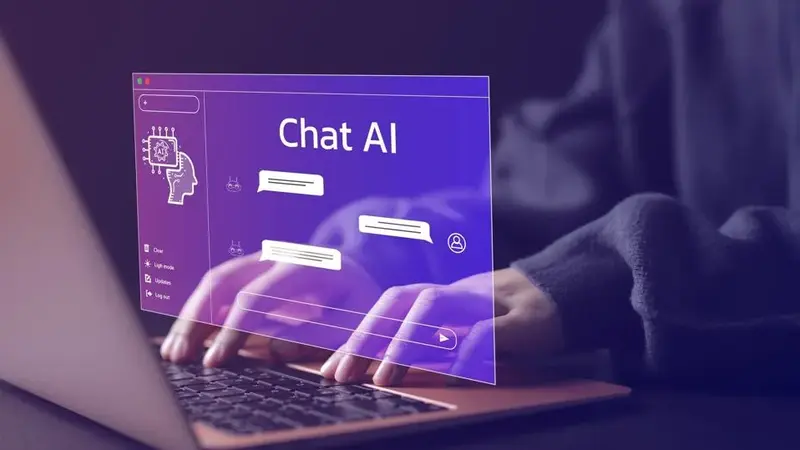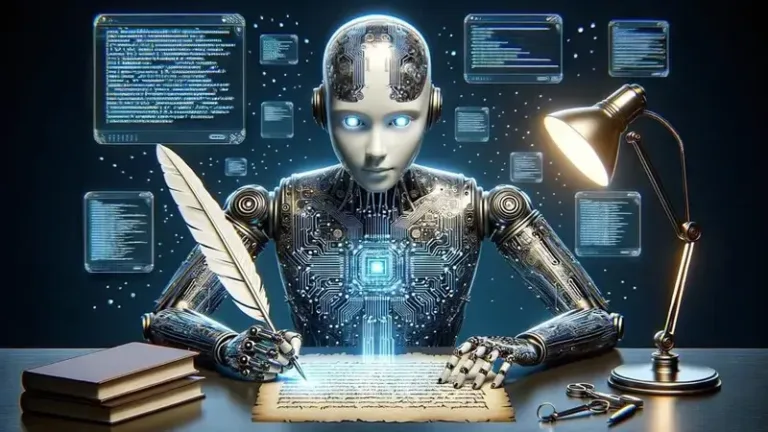Quick Links
In current years, AI chatbots have converted from rudimentary scripts into sophisticated conversational sellers capable of managing complex interactions. This evolution has been driven through advancements in artificial intelligence (AI) and natural language processing (NLP), which have extensively improved the abilties and programs of chatbots. In this blog, we can discover the adventure of AI chatbots from their inception to the cutting-edge, inspecting key milestones, technological advancements, and destiny traits.
Early Days-Scripted Responses
Birth of Chatbots
The concept of a chatbot dates back to the early days of computing. One of the first examples of a chatbot was ELIZA, developed by Joseph Weizenbaum in 1966. ELIZA was a simple program designed to simulate a conversation with a psychotherapist. It used pattern-matching techniques to generate responses based on user input. While ELIZA could mimic a conversation to some extent, its responses were largely scripted and lacked genuine understanding.
Rule-Based Systems
In the 1980s and 1990s, chatbots evolved into rule-based systems. These systems relied on predefined rules and decision trees to handle user interactions. Chatbots like ALICE (Artificial Linguistic Internet Computer Entity), developed by Richard Wallace in 1995, used an extensive set of rules to generate responses. While these chatbots could handle a wider range of inputs than ELIZA, they still struggled with context and nuance.
Limitations of Early Chatbots
Early chatbots faced several limitations, including:
- Lack of Context Understanding: Rule-based chatbots could only handle specific inputs and failed to understand the broader context of conversations.
- Limited Flexibility: The rigid rule-based approach made it difficult to handle unexpected or complex user queries.
- Difficulty in Scaling: As the number of potential interactions increased, managing and updating rule sets became cumbersome.
Rise of Machine Learning and NLP

Introduction of Machine Learning
The early 2000s saw the advent of machine studying strategies into chatbot improvement. Machine mastering allowed chatbots to improve their overall performance based on records as opposed to depending completely on predefined policies. One of the key improvements became the usage of statistical models to generate responses.
Natural Language Processing (NLP)
NLP emerged as a crucial component in enhancing chatbot capabilities. NLP focuses on the interaction between computers and human language, enabling chatbots to understand and generate natural language text. Key developments in NLP included:
- Tokenization: Breaking down text into smaller units (tokens) to better understand and process user input.
- Named Entity Recognition (NER): Identifying and classifying entities such as names, dates, and locations within text.
- Part-of-Speech Tagging: Identifying the grammatical roles of words in a sentence to improve comprehension.
Advent of Conversational AI Chatbots
Conversational AI represents a vast leap ahead from simple scripted responses. This technology leverages gadget gaining knowledge of models to generate greater natural and context-aware responses. Siri, added through Apple in 2011, become one of the first mainstream examples of conversational AI. Siri used a aggregate of speech popularity, NLP, and gadget studying to interact with customers and perform responsibilities.
Era of Deep Learning and Neural Networks
Breakthroughs in Deep Learning
The mid-2010s saw the rise of deep getting to know, a subset of machine mastering that involves training synthetic neural networks with more than one layers. Deep learning has revolutionized chatbot development by way of enabling more state-of-the-art language fashions. Notable advancements include:
- Word Embeddings: Techniques like Word2Vec and GloVe represent words as vectors in a high-dimensional space, capturing semantic relationships between words.
- Sequence-to-Sequence Models: These models are used for tasks such as translation and text generation, improving the ability of chatbots to generate coherent and contextually relevant responses.
Transformer Models and Attention Mechanisms
The introduction of transformer models marked a turning point in AI chatbots and NLP. The Transformer architecture, introduced in the paper “Attention is All You Need” by Vaswani et al. (2017), revolutionized how language models handle context and generate responses. Key innovations include:
- Attention Mechanisms: These mechanisms allow models to focus on different parts of the input sequence when generating responses, improving context understanding.
- Pretrained Language Models: Models like BERT (Bidirectional Encoder Representations from Transformers) and GPT (Generative Pretrained Transformer) are pretrained on large datasets and fine-tuned for specific tasks, leading to significant improvements in language understanding and generation.
ChatGPT and Large Language Models
OpenAI’s GPT-3, launched in 2020, exemplifies the competencies of massive language fashions. With one hundred seventy five billion parameters, GPT-three can generate human-like textual content and carry out a wide range of language tasks. Its ability to understand context and generate coherent responses has set a new popular for conversational AI chatbots.
Current Trends and Applications
Personalization and Context Awareness
Modern chatbots are increasingly focused on personalization and context awareness. Advanced models can remember previous interactions, understand user preferences, and provide tailored responses. For example:
- Contextual Memory: Chatbots can maintain context over multiple interactions, allowing for more meaningful and personalized conversations.
- Dynamic Adaptation: AI chatbots can adapt their responses based on user behavior and preferences, improving user satisfaction.
Multimodal Interactions
The integration of multimodal capabilities allows chatbots to handle a combination of text, voice, and visual inputs. This trend is driven by advancements in:
- Speech Recognition: Improved speech-to-text technologies enable chatbots to process voice commands and provide spoken responses.
- Image Recognition: Chatbots can analyze and interpret images, allowing users to interact using photos or screenshots.
Enhanced Integration with Business Systems
AI chatbots are increasingly integrated with business systems to provide seamless customer support and automate workflows. Key integrations include:
- CRM Systems: AI Chatbots can access customer relationship management (CRM) data to provide personalized support and handle queries more efficiently.
- E-Commerce Platforms: Integration with e-commerce systems allows chatbots to assist with product recommendations, order tracking, and customer inquiries.
Future of AI Chatbots
As AI technology continues to evolve, several trends and developments are expected to shape the future of chatbots:
Advanced Conversational Abilities
Future chatbots will exhibit even more advanced conversational abilities, including:
- Emotional Intelligence: AI models will be able to detect and respond to emotional cues, providing empathetic and supportive interactions.
- Complex Problem-Solving: Chatbots will handle more complex queries and perform tasks that require multi-step reasoning and decision-making.
Ethical Considerations and Bias Mitigation
Addressing ethical considerations and mitigating bias will be crucial for the responsible development of AI chatbots. Key areas of focus include:
- Fairness and Inclusivity: Ensuring that chatbots provide fair and unbiased interactions for all users, regardless of their background.
- Transparency and Accountability: Providing transparency about how chatbots operate and ensuring accountability for their actions.
Integration with Emerging Technologies
The integration of chatbots with emerging technologies will open new possibilities, such as:
- Augmented Reality (AR): Chatbots could interact with users in AR environments, providing contextual information and assistance.
- Blockchain: Blockchain technology could enhance chatbot security and privacy by providing decentralized and tamper-proof interactions.
The evolution of AI chatbots from easy scripted responses to state-of-the-art conversational agents represents a fantastic adventure of technological development. As AI and NLP technologies retain to development, chatbots are getting increasingly capable of dealing with complicated interactions, offering personalized stories, and integrating with diverse business systems.
While sizeable strides had been made, ongoing challenges which includes moral concerns, bias mitigation, and the combination of rising technology will shape the destiny of chatbots. By staying informed about these tendencies and embracing the ultra-modern improvements, agencies and developers can harness the entire potential of AI chatbots and preserve to beautify consumer interactions in meaningful and impactful approaches.
As we look beforehand, the future of AI chatbots guarantees even greater innovations and possibilities, remodeling how we interact with technology and shaping the next generation of conversational retailers.
For more blogs on new latest mobile Technology visit TECHMOBUZZ or check us on Facebook.




